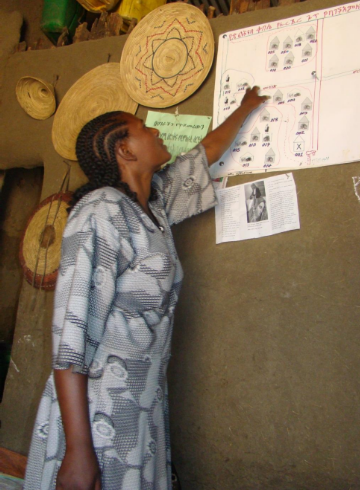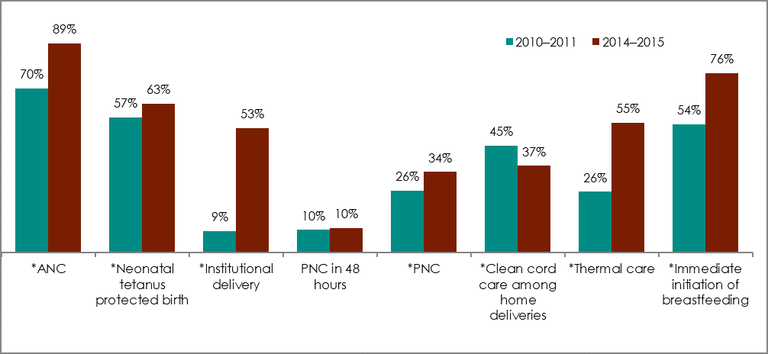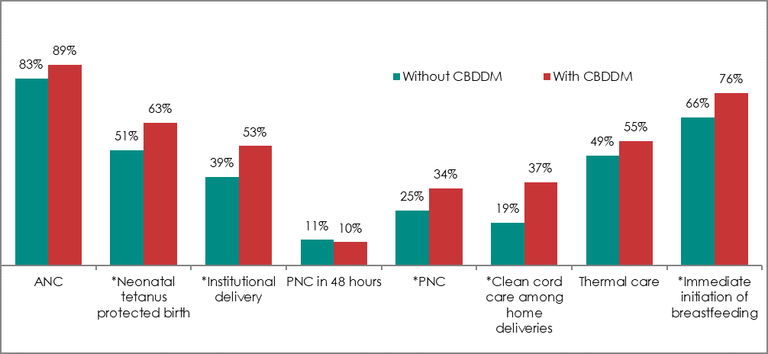Uptake of Antenatal Care and Community-Based Data for Decision Making in Ethiopia
A sustainable mapping effort should be community oriented and empower community stakeholders to make pertinent information accessible for use. Seeing data on a map can illuminate new perspectives, especially for community agents supporting access to care for rural households. In Ethiopia, maps and data review meetings are important elements of community-based efforts to improve maternal, reproductive, newborn and child health care. Data on indicators are visualized geographically for ease of use—a hallmark of community data use to improve uptake of primary care services, such as antenatal care (ANC).
The Last Ten Kilometers 2020, formerly Last Ten Kilometers (L10K), is a Bill & Melinda Gates Foundation flagship project, implemented by John Snow, Inc. L10K 2020 supports health systems in 115 districts—covering about 17 million people, or 19 percent of the population of Ethiopia. It improves people’s access to and utilization of high-impact reproductive, maternal, newborn, and child health interventions by linking households to basic health service delivery. Under the Community-Based Data for Decision Making (CBDDM) strategy, community health workers—or Health Development Army (HDA) members, as they are called in Ethiopia—create maps of the 20–40 households they support (photo). 
The maps display households according to their need for reproductive, maternal, newborn, and child health services and sanitation status. Identifying pregnant women and linking them to health facilities for ANC and facility-based delivery are important parts of the CBDDM strategy. Health extension workers receive information from the maps in summary reports, at the health post level, or at community-level meetings. Health extension workers, HDA members, and a community health committee meet to review the data to identify barriers to access to services and implement solutions accordingly. This process was scaled from 14 districts in 2013, to 115 districts in 2018, and is being institutionalized by the Ethiopian government as a national strategy for community health service delivery.
The process of mapping followed by community-level review of data helps health extension workers visualize targets, plan and monitor progress, prioritize services, and ensure community action. It also supports HDA members in their work. Formal evaluation has shown that the CBDDM strategy leads to significant improvements in community-based maternal and newborn care practices—increased ANC and postnatal care (PNC) uptake, skilled birth attendance, and exclusive breastfeeding.
The graphs present information about maternal and newborn care practices in locations before and after implementation of the CBDDM strategy. The differences between the rates of these practices before and after the intervention demonstrate its positive impact.
Maternal and newborn care behaviors at baseline (2010–2011) and follow-up (2014–2015) among women with children 0 to 11 months old

*Statistically significant (p<0.05) difference between 2010–2011 and 2014–2015
Maternal and newborn health care behaviors (2014–2015) with and without the influence of CBDDM

*Statistically significant (p<0.05) CBDDM effect
Please click here to access the indicator definition for antenatal care at least four times prior to delivery.












